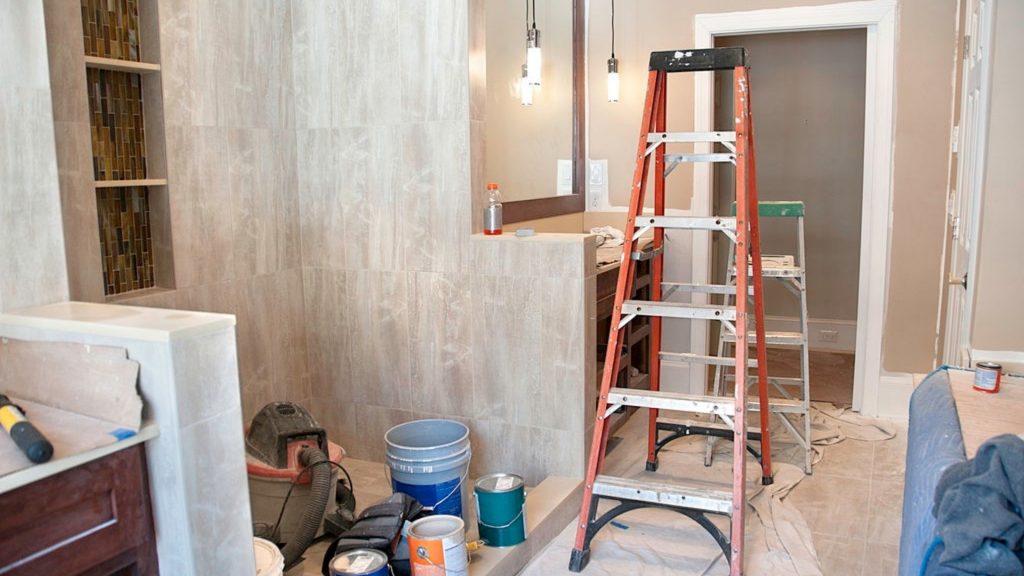Budgeting for your remodel is no small task. Sticking to that budget, once you’ve decided on it, can be even more challenging. Before you begin, it always helps to do a lot of research and plan carefully.
To get you started, we’ve thrown together a rough template to give you an idea of what you will need to think about.
Planning Your Remodel
Step One: Determine Your Budget
How much do you have to spend on your remodel? The answer to this question will largely dictate what you can and can’t do.
Consider the current value of your home. You shouldn’t spend more than 15 percent of the value of your home on a single room. Spending more rarely adds value.
Bringing in your contractor early in the planning process always helps. A design-build firm like Winthorpe can go over your priorities with you and provide a realistic picture of what it will all cost.
 Step Two: Determine Your Financing
Step Two: Determine Your Financing
Once you have figured out how much you are willing to spend, you will need to know where that money is coming from. Do you have the liquid cash to spend? Or do you need to take out a loan or dip into your line of credit to cover the costs? You will need to ensure that your remodeling budget stays within the limits of your available funds.
Plan For The Unexpected
We recommend setting aside about 10 – 20 percent of your remodeling budget for unforeseen expenses. That way, if we run into any surprises along the way, you will have a little leeway.
When remodeling older houses, there are often unforeseen issues. Having your design-build contractor involved from the beginning will help to minimize the potential problems. Often, new areas of improvement will come to light during the job. If you have that extra cushion, you’ll be able to accommodate the additional work without going over your spending limit.
Step Three: Prioritize The Work To Be Done
If you know exactly what you want going in, it will be much easier to stay within your budget. Start by making a list of all the upgrades that are on your mind and then separate that list into two columns: wants and needs.
Keep in mind that each job should be done in the right order. For example, if you know you are going to change up your kitchen cabinets or rethink the floorplan completely, it makes no sense to put in new countertops until you are ready to do so.
Some things you might ask yourself include:
- What are your ultimate goals for the remodel?
- What are the things you will need to make it all happen?
- What things are you willing to compromise on?
- What things are you willing to spend a little more on?
 Step Four: Create A Detailed Action Plan That Includes All Associated Costs
Step Four: Create A Detailed Action Plan That Includes All Associated Costs
Having a comprehensive remodeling plan that lists all relevant costs will help on many levels. It will help you manage your cash flow during the remodel and, perhaps most importantly, it will help you communicate your ideas to your contractor.
Selections
Include all the finishings you will need to make in your plan and calculate what you can spend on them. Some of the selections you will need to make include hardware, paint, flooring, tile, countertops, faucets, and windows. Don’t forget to include shipping costs and taxes.
Appliances
For new appliances, consider the cost of delivery and installation, and don’t forget to think about what you’re going to do with your old appliances.
Living Costs
Include living costs in your budget and plan accordingly. Are you going to be living in your home throughout the renovation? Will you have a functioning kitchen, or will you be eating out more? Will your pets need to be boarded? Planning ahead will save you time, money, and a lot of stress.
How We Help You Save On Your Remodeling Budget
Depending on how handy you are, or how willing you might be to do some of the work yourself, there are many ways that you can save on your remodel.
Some of the things you can safely do yourself include demolition, painting, and making your selections. However, our design-build team is always ready to help with the hard stuff. We can also help you value-engineer the work, if necessary. This involves making suggestions on alternative methods or materials that will save you money while still delivering the look and function you want.
If you are ready to remodel your Maryland or Washington, DC, home, we’re ready to help. Reach out today to get started.



 Step Four: Create A Detailed Action Plan That Includes All Associated Costs
Step Four: Create A Detailed Action Plan That Includes All Associated Costs 

